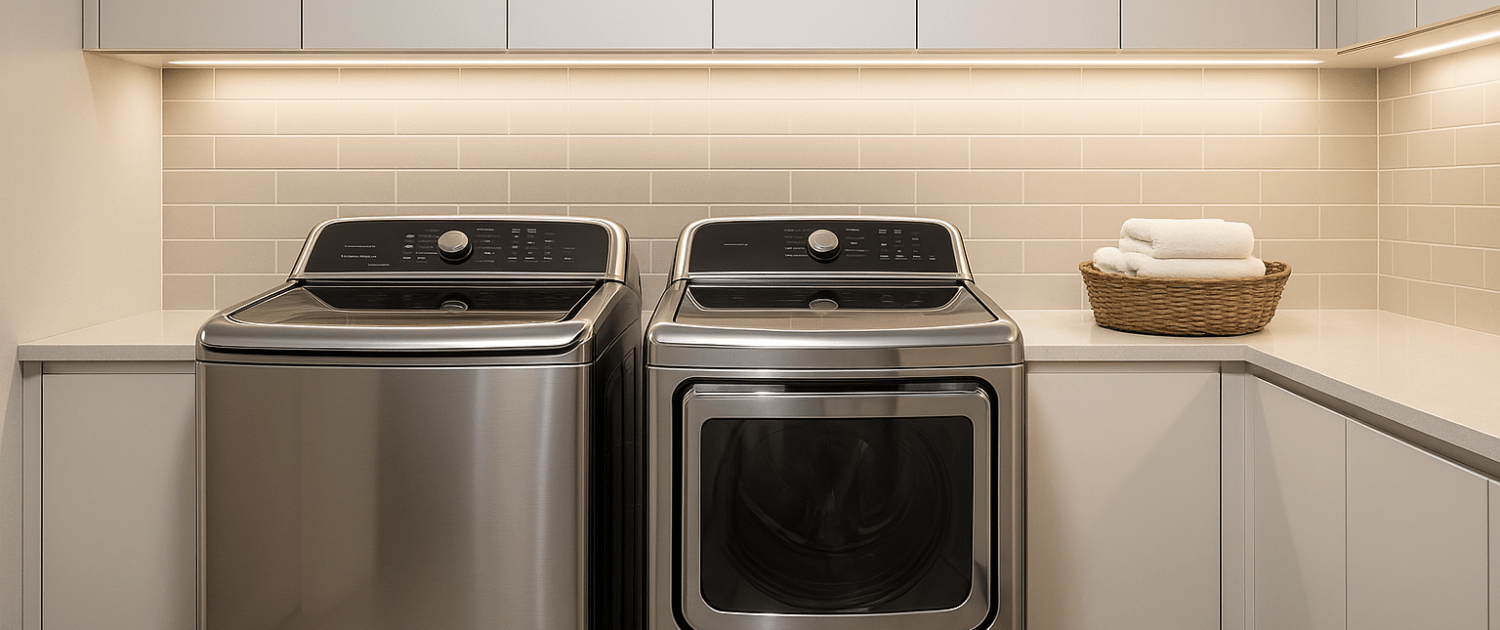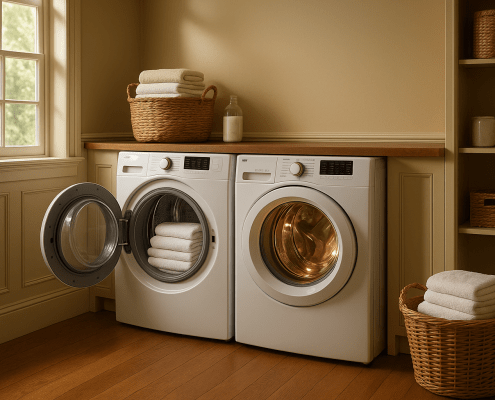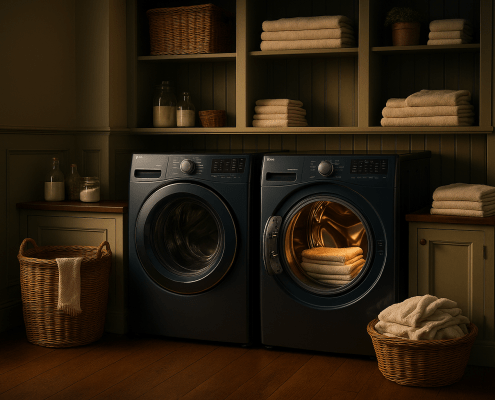How to replace the idler pulley WE03X31620 on a GE dryer
Steven E / Thursday May 15, 2025
Is your GE dryer making a loud squeaking noise that just won’t quit? The likely culprit is a worn-out idler pulley, but don’t worry, swapping it out is a breeze! With our step-by-step guide and handy how-to video just below, you’ll have your dryer humming quietly in no time, all in under an hour!
Looking for the right part? Enter your appliance model number below to find the exact match and get your appliance running like new again!
That loud squeaking noise coming from your GE dryer? Yeah, it’s probably the idler pulley (part WE03X31620) going bad. It helps keep the belt tight around the drum, and when it wears out, your dryer starts making all sorts of racket. The good news? Replacing it is a simple fix you can knock out in under an hour. We’ll walk you through what to do and how to get your dryer running quietly again.
You can find a replacement Idler Pulley WE03X31620 here. If you need other replacement parts for your GE dryer, just enter your model number at AppliancePartsPros.com to find them. It’s that easy! Most orders arrive in just two business days, and we have thousands of guides to show you how to install your new parts.
The information in this article may not apply to your specific appliance model. We recommend consulting your manufacturer’s documentation or contact us with any questions.
What you’ll need
- Phillips screwdriver – to remove various screws
- Quarter-inch nut driver – to remove front panel screws
- Flat blade screwdriver – to disconnect door switch wires
- 7/16 socket wrench – to remove the idler pulley nut
- Replacement idler puller – (WE03X31620)
Safety precautions
Safety should always be a priority when working on any appliance. Here are a few practical tips to help you stay safe:
- Turn off the power to the appliance by unplugging it or switching off the circuit breaker before starting any maintenance or repairs. This protects you from the risk of electric shock.
- Wear insulated gloves to shield your hands from sharp edges, pinching hazards, or debris.
- Work at a steady pace and take your time to avoid accidents or injuries.
- Make sure your workspace is well-lit so you can clearly see and access the parts you’re working on.
- Keep the area clear of clutter, and ensure children and pets stay out of the workspace.
- Never handle internal parts with wet hands. Check that both your hands and the work area are completely dry.
- Refer to your appliance’s user manual for any specific instructions or safety guidelines related to the part or repair.
- Handle parts gently to avoid damage to the appliance or potential injuries from applying too much force.
- Use safety glasses when dealing with chemicals, dust, or large debris to protect your eyes from harm.
- If the appliance was recently used, give it enough time to cool down before working on any heated components.
- Take photos or notes of wiring connections and terminals before disconnecting anything to make reassembly easier.
- Avoid touching exposed wires or terminals. If you must handle wires, use non-conductive tools or wear insulated gloves to minimize the risk of electrical shock.
Removing the old idler pulley
With the right tools in hand, you’re ready to dive into removing the old, idler pulley. Here are the steps:
Accessing the idler pulley
- Unplug the dryer from its power source. Safety first!
- Use the Phillips screwdriver to remove the two screws securing the top panel, one in each rear corner.
- Remove the top panel.
- Remove the two front panel screws located in the upper corners, using the nut driver.
- Lift the front panel up and out.
- Tilt it forward to release it from the bottom hinges.
- Use the flat-blade screwdriver to disconnect the two-door switch wires.
- Reach into the dryer and push down on the idler pulley arm to loosen the belt tension.
- Slip the belt off of the motor pulley.
- Grab the front drum edge and carefully slide the drum out to access the idler pulley.
Removing the idler pulley
- With the drum removed, locate the retainer nut holding the idler pulley onto the arm.
- Use the 7/16 socket wrench to loosen and remove this retainer nut.
- Slide the old idler pulley off of the arm.
- Be sure to make note of how the pulley is positioned on the arm.
Installing the new idler pulley
- Apply a small amount of high-temperature grease inside the new idler pulley bearing. This will ensure smooth rotation.
- Slide the new pulley onto the idler arm in the same orientation as the old one.
- Hand thread the retainer nut back onto the shaft a few turns.
- Use the socket wrench to tighten the nut the rest of the way. As you tighten, the grease will distribute within the bearing.
Reassembling the dryer
Once the new pulley is securely installed, it’s time to put the dryer back together:
- Carefully slide the drum back into position, aligning the back edge with the supports.
- Reach in and loop the belt back over the motor pulley.
- Install the belt onto the idler pulley.
- Rotate the pulley by hand to check that it moves smoothly.
- Reattach the two-door switch wires to their terminals.
- Tilt the front panel back into place, securing the bottom hinges first.
- Replace the two front panel screws using the nut driver.
- Set the top panel back into position, aligning the tabs with the slots.
- Secure with the two corner screws.
- Reinstall the control panel.
- Secure with three screws along the top.
- Restore power to the dryer and test it for proper operation.
More information
Thanks for reading! If you have any other appliance repair needs or projects, you can find more resources including our DIY blog at AppliancePartsPros.com. There, you can enter your model number to order the exact parts you need. Most orders arrive in two business days.
You can also reach our award-winning customer service team at 1-877-477-7278, chat with a pro on our website and watch thousands of free video tutorials on our YouTube channel.
With nearly a decade of experience in providing top-notch customer service regarding appliance parts and repair, Steven enjoys sharing practical advice, troubleshooting tips, and interesting information to help readers stay informed.





